Mud is associated with death, disease and madness, despite being one of the most productive ecosystems on earth. Kate Monson explores the swirling, inconstant, downright stinky mudlands of her family history, and suggests that mud can teach us to live well in tangled, troubled times
“Mud stories are stories you don’t want to tell, but which will be told for you. Mud stories are things that you don’t want to touch, but that refuse to let you go”1. For me, mud stories may be shifting, sticky and strange. But they are also grounding and generative, familiar and familial.
Stories of Canvey Island rippled through my childhood. Nostalgic and exciting, exotic and intimate, they were stories that connected me to a place, situated me within relationships and gave me a rich sense of time. My great-grandmother, Mimi, a talented pianist whose music drifted out of open windows and down muddy lanes. My great-grandfather, Gaga, a writer and tinkerer, traumatised by his time in the trenches. Mimi was Swiss-French, from a family troupe of musicians, Gaga was English. They met in London during the first world war, a sick soldier and his nurse; people I never met but know through continuing love and continued telling.
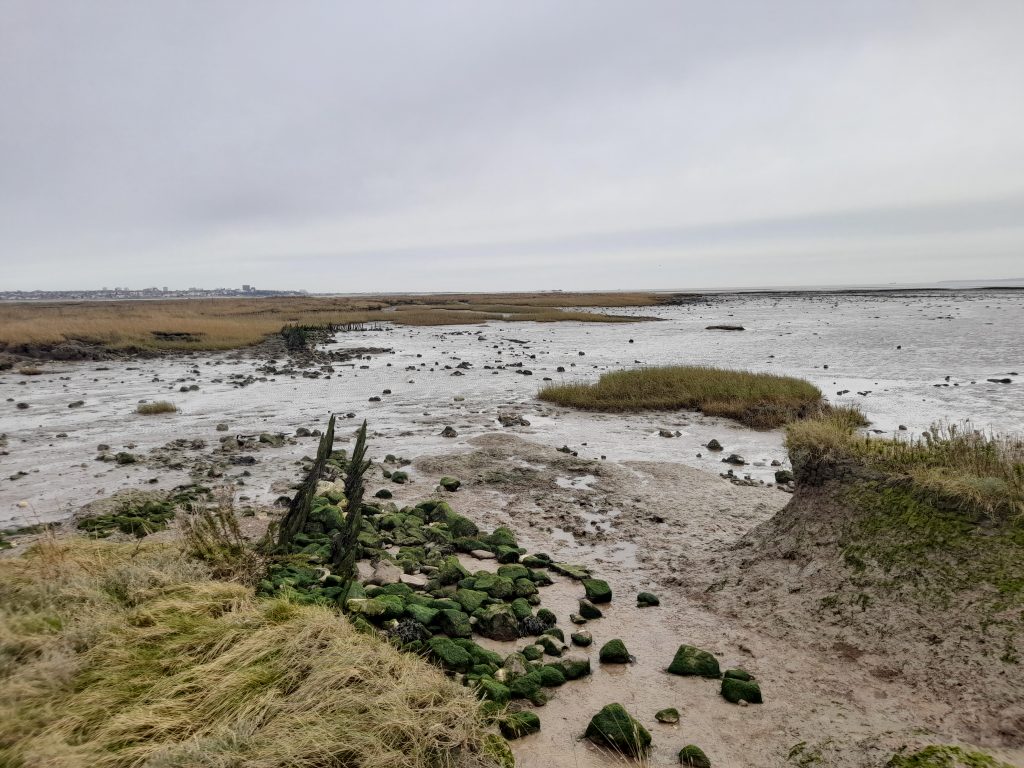
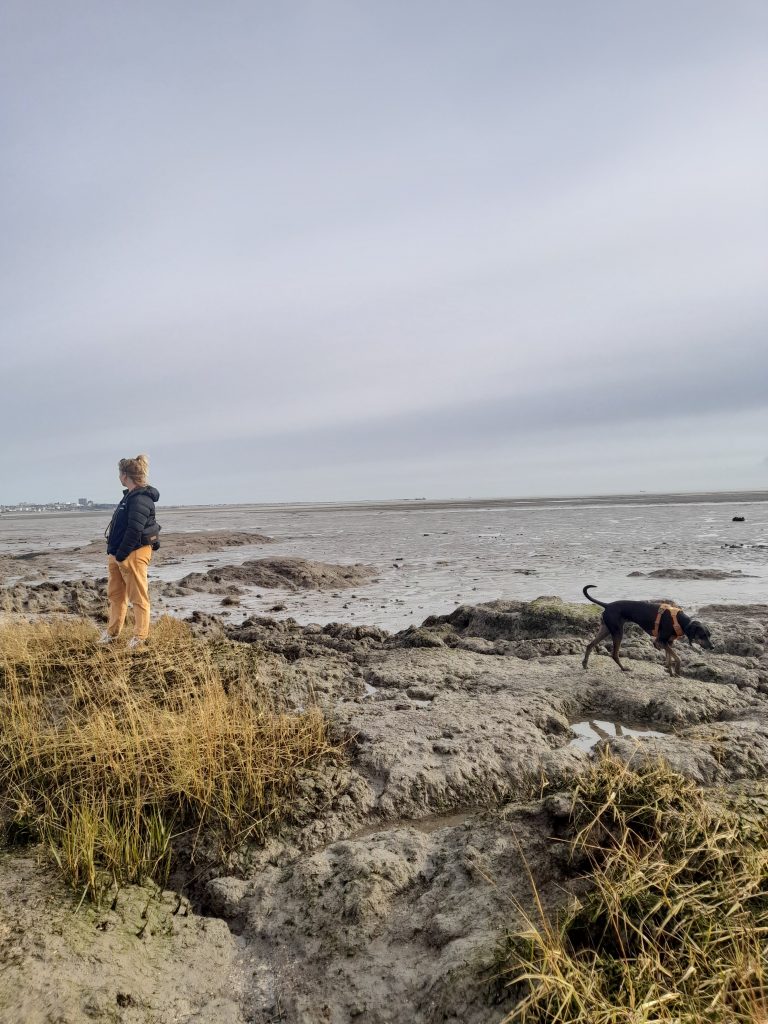
My granddad and his brother, swashbuckling boys who mudlarked in the creeks after storms, never finding a dead man at Canvey’s Deadman’s Point but always making sure they were first to reach the flotsam forgotten by the tide. My mum, a rascally wanderer, lone among the mire (her older sister rarely features in the stories she shares); the neighbour with the island’s first colour TV and sneaking peeks through the window; mud gutting; creek-swimming within clear leaching range of the rubbish dump at the end of her road; watching as rainbows formed in oily pools; returning for tea, slick and stinking for bread and dripping.
A catastrophic flood; evacuation; rescue missions in wooden row boats; the house looted; drinks cabinet raided. The seawall, the mud, the creeks and the banks; homes built out of scrap wood, old railway carriages and scuppered barges. Fog and mizzle, pulsing tides, a place both-and-between terra firma and terra nullius.
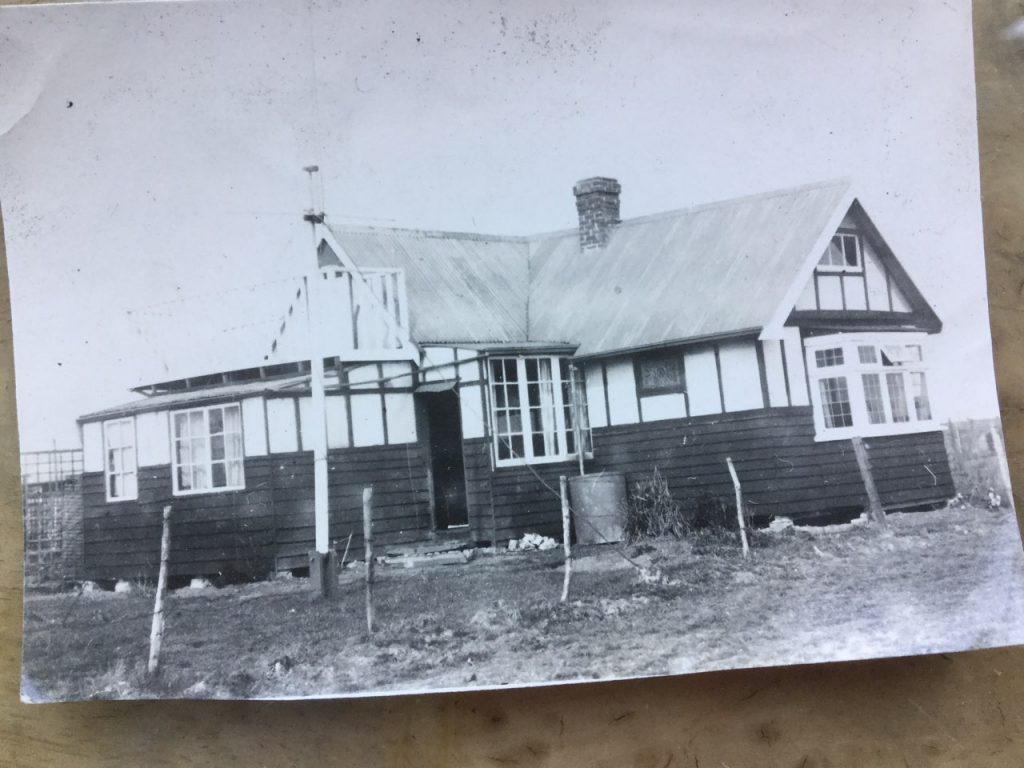
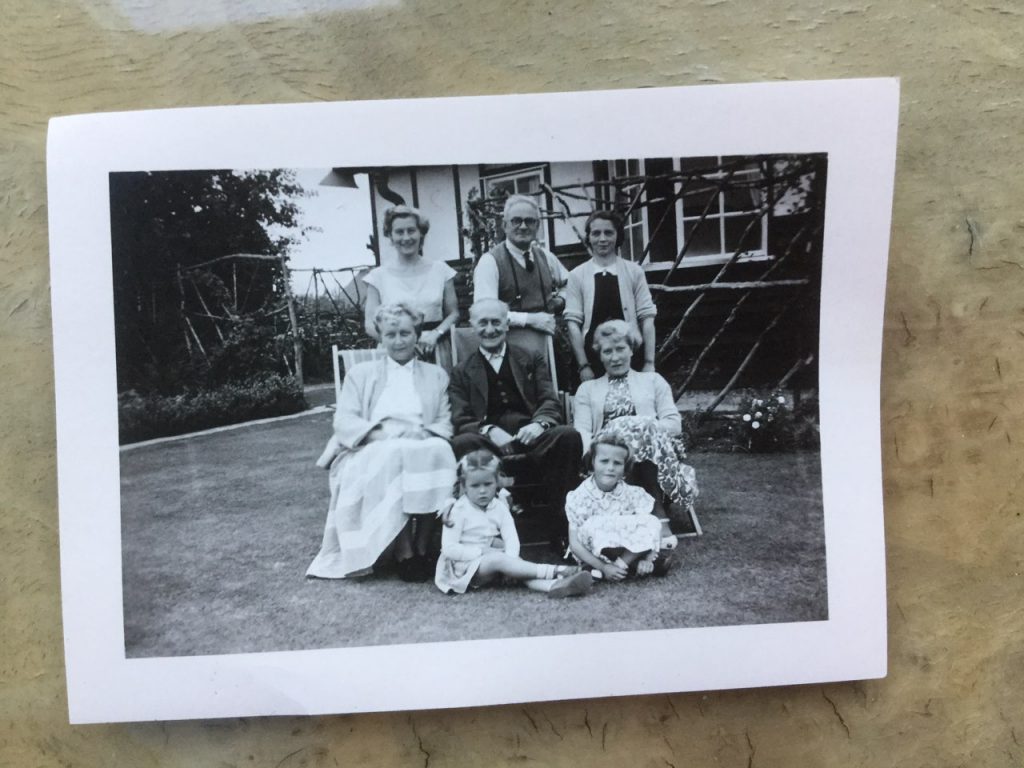
Canvey Island in the Thames Estuary has been home to my maternal family since Mimi and Gaga moved there from southeast London with their two young sons in the 1920s. It provided them with land and livelihood. Gaga built their wooden house on a plot at the swirling tip of the island; he, and then later his sons too, designed and built boats for a living. Their name still sits on the creekside factory they built in the 60s when their business had matured from collapsible wooden dinghies to cruising catamarans, nimble enough to slink within the narrow waterways that ease out to the Thames Estuary, tough enough to traverse the Atlantic Ocean.
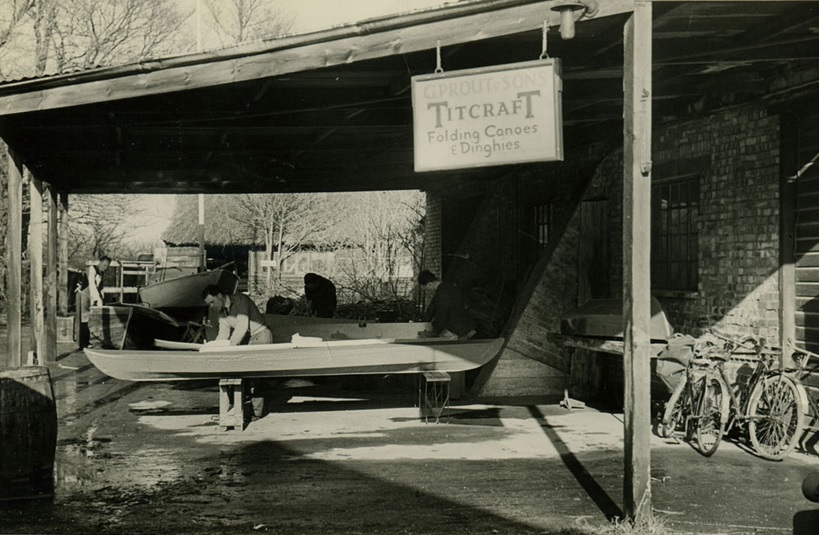
Pay attention to mud
At its simplest an island is ‘a thing in water’, defined not by the earth as continents are, but by something much more volatile: water. Canvey, however, is more ‘a thing in mud’, defined not by the flow and frisson of liquid, but by the seeping, stinking, stickiness of mud – even when it floods. “Estuary water is not just water – it’s sludge”, writes Canvey local, Wilko Johnson2, remembering the catastrophic North Sea flood of 1953 that submerged the island (and much of the east coast of England as well as large parts of the Netherlands).
Emphasising the mud rather than the water in a flood scenario is not as strange as it sounds. In her book, Precarious Japan, Anne Allison dedicates a whole chapter to mud and describes the country’s 2011 tsunami – an event also usually defined by water – as a crisis that “oozed mud”. By paying attention to mud we start to experience the world, and ourselves, differently; ask awkward questions, allow alternative answers to emerge.
I scooped it from the edge of Benfleet Creek at low tide. My foot, inappropriately shod in a canvas trainer, sank down through the matted marsh grass as I stretched to reach the ‘best’ mud, the ‘purest’ mud, the most muddiest mud.
In front of me on the desk as I write is a small jarful of Canvey Island mud. I scooped it from the edge of Benfleet Creek at low tide. My foot, inappropriately shod in a canvas trainer, sank down through the matted marsh grass as I stretched to reach the ‘best’ mud, the ‘purest’ mud, the most muddiest mud. I travelled back to London with it on the train, the sharp stink of it prickling my nose – and my self-confidence. A sure way to be reminded of the strict regime of ‘appropriate bodily odours’ in the city is to transgress it: arrive clad in clag. Even after washing, small mounds of it stay packed under my nails, a film remains pressed onto my fingertips, so fine it brings their prints into delicate relief. And the smell – softer now, but still with lingering sulphuric notes.
Rich components of mud, from seeds to slave-ship ballast
I occasionally pick up the mud jar, turning it and tracing seams of bluey-black and grey and sometimes silver as they ebb slow arcs through its dark, silty thickness. I wonder what is within it, and where it might have been. What busy microorganisms, what dormant seeds, what toxic remnants, what powdered relics of industry? Brazilian artist, Maria Theresa Alves, grew a floating garden from boat ballast in Bristol. By making visible the hidden potentialities of the sand, stones, earth and bricks brought to port in the bottom of slave ships, Alvez reveals patterns, temporalities and instruments of colonialism, commerce and migration that trouble official accounts of culture, as well as the lands it is built on and through. Despite the installation ‘ending’ in 2016, the barge is still tethered in Bristol Harbour, a lingering presence, forgotten yet flourishing, an example, perhaps, of what Anna Tsing and friends call “the arts of living on a damaged planet”3.
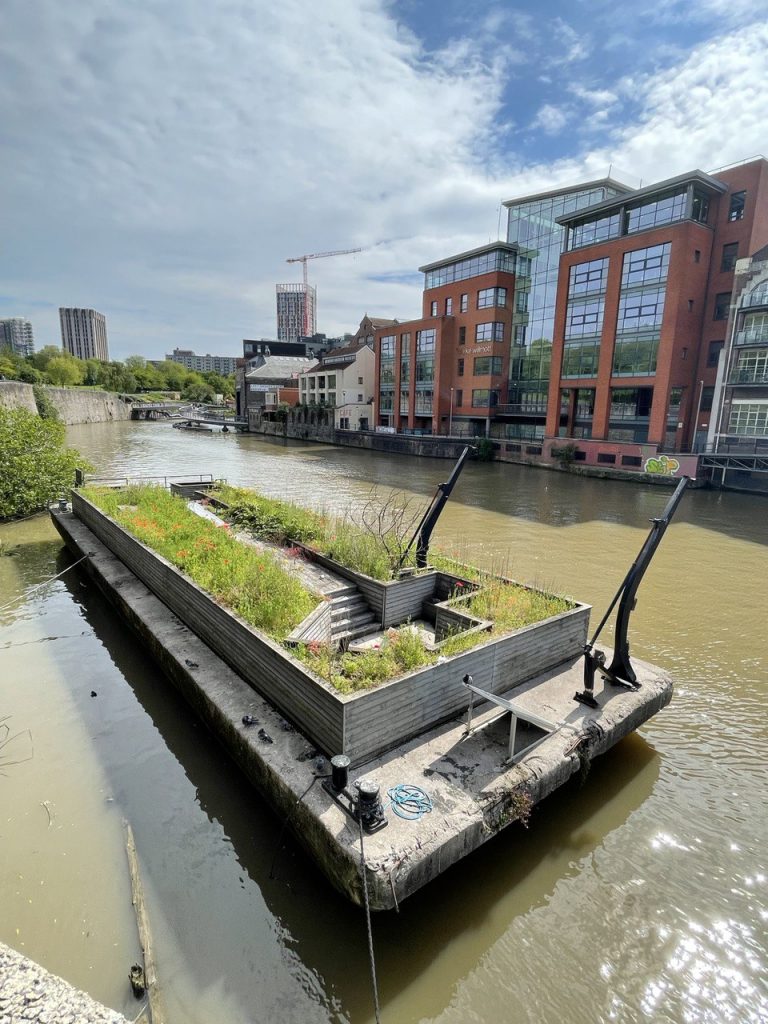
Who cares about wetlands?
Much maligned, victim of an enduring logic of dredge-drain-reclaim, muddy places are being lost at a terrifying rate three times faster than that of forests. It’s estimated that 64% of the world’s wetlands have disappeared since 1900; in England alone up to 90% of wetlands have been vanquished since the Industrial Revolution. And this rate of loss is accelerating. As a result of climate change, rising sea levels, and increased urbanisation. But perhaps the biggest challenge facing wetlands – these quagmires, bogs, saltings, sloughs, swales, moors, marshes, morasses, muskegs, everglades and fens – is a lack of care and attention.
As Rod Giblett states, “In the patriarchal western cultural tradition, wetlands have been associated with death and disease, the monstrous and the melancholic, if not the downright mad… They have been seen as a threat to health and sanity, to the clean and proper body, and mind”4. Yet wetlands are one of the most productive ecosystems on earth, providing vital energy and shelter to myriad species, as well as acting as natural water filters and carbon sinks, not to mention flood protection.
In seeking to better understand how humans might coexist with/in environmental disturbance, degradation and destruction in the context of the anthropocene5, Canvey mud has become my guide. It surrounds and seeps into the island – whose margins and creek veins ebb and flow with the tide to reveal new territories: Clock Bank, Chapman Sands, Marsh End Sand and more. It oozes through my family history and muddles my thinking into strange shapes and disorientating directions. Its smell, its touch, its suck. Its ever-emergent in-betweenness, its “viscous porosity”6. It has all helped me to understand and attend to the rich interactions between all worldly bodies, while paying particular attention to sites of sticky friction, resistance, and opposition.
Become the muddle – the benefits of wallowing in uncomfortable places
I invite you now to think-with, walk-with and become-with the muddle, encompassing its two meanings: one contemporary – to bring into a disordered or confusing state – the other historic – to wallow or dabble in mud. I suggest that in doing this we might learn how to live well, together, in the troubled times and places of the anthropocene. The words ‘with’ and ‘together’ are not here meant to suggest alliance or agreement, but relationality, responsibility, accompaniment, and accountability.
These ‘withs’ can be awkward and uncomfortable, disordered and confusing; thinking, walking, becoming with the muddle, is a way of staying with the trouble, of accounting for and being responsible to our entanglements with others, both those we might feel we want to protect ourselves from and those we might want to welcome, even challenging these distinctions altogether. Mud, I suggest, can enable a ‘transcorporeal’ politics of belonging, and “a model for living better together in an ever-eroding, ever-shifting, constantly resurfacing world”7.
Mudwalking with my mother
Follow me then to The Point, Canvey’s curling tail which, on a spring tide, can stretch as far as Southend Pier, five and a half kilometres away. Follow me to meet my mother. She grew up here, at the “wild and woolly” end of the island (my nana’s words); these creeks and mud guts, shell banks and brackish bays were her playground. Follow us as I let my audio recorder run while we muddle our way across this terrain. Follow us as we entangle a tale of discomfort and disorientation, but also connection and familiarity, and ask what may be found when we ‘patiently sit in a muddle’, not trying to solve it, but take time to ‘consider incommensurability’8.
um
shall we put our wellies on?
yeah!
lovely colours
meadowy almost
a sort of mud meadow
see that black black
so you see, that bank there
when the tide’s coming in, you’d make a slide, a mud slide
really sticky,
yeah
you can feel it sucking,
yeah
you can imagine going in too deep
might have to go back
might have to do some mud-gutting
there’s the cord grass
it almost looks like rocks, the way it’s tumbled, its very rock-like
that looks like rock
all of that
and so this is the coppery stuff
i mean it’s not rock, but it’s tumbled like rock
or like,
almost like lava
yes, that’s right
solid
and look at that…
we have got welly boots on…
yeah, just take it slow
swooshy, sloshy, crunchy
yeah, this looks like it might be doable
swooshy, sloshy, crunchy
maybe the other side of that
that’s pretty solid isn’t it
sloppy, crunchy
wet ploppy
sloppy, swooshy, sloppy
wet like a wet mouth crunching celery (or something more sloppy)
digestion
this, look at this colour, sort of green
little, like, mouldy, like, velvet
this looks like plastic but I think it’s a weed
it’s very, it is very clay-ey, you get underneath it and it’s just like, this sort of…
well, do you think this is plastic or do you think this is weed
this here
look at this here
oh no, that’s weed, surely
well, i think it’s weed
yeah, yeah, no, oh, no
i think that’s weed
i think it’s weed
yeah
i think it is
oh no, it’s plastic, oh, no, oh, I don’t know
mmmmmm
no, i think that’s weed, no, it’s weed isn’t it, it is weed, it’s not…
should grow that so it can become our new cling film
ah, we’re nearly back this way, that’s good
yep, yeah
it was nice to forge across
rather than have to go back
it’s difficult when you have to navigate
across a mud-gut where are we gonna eat?
what’s the time?
is it even lunch time?
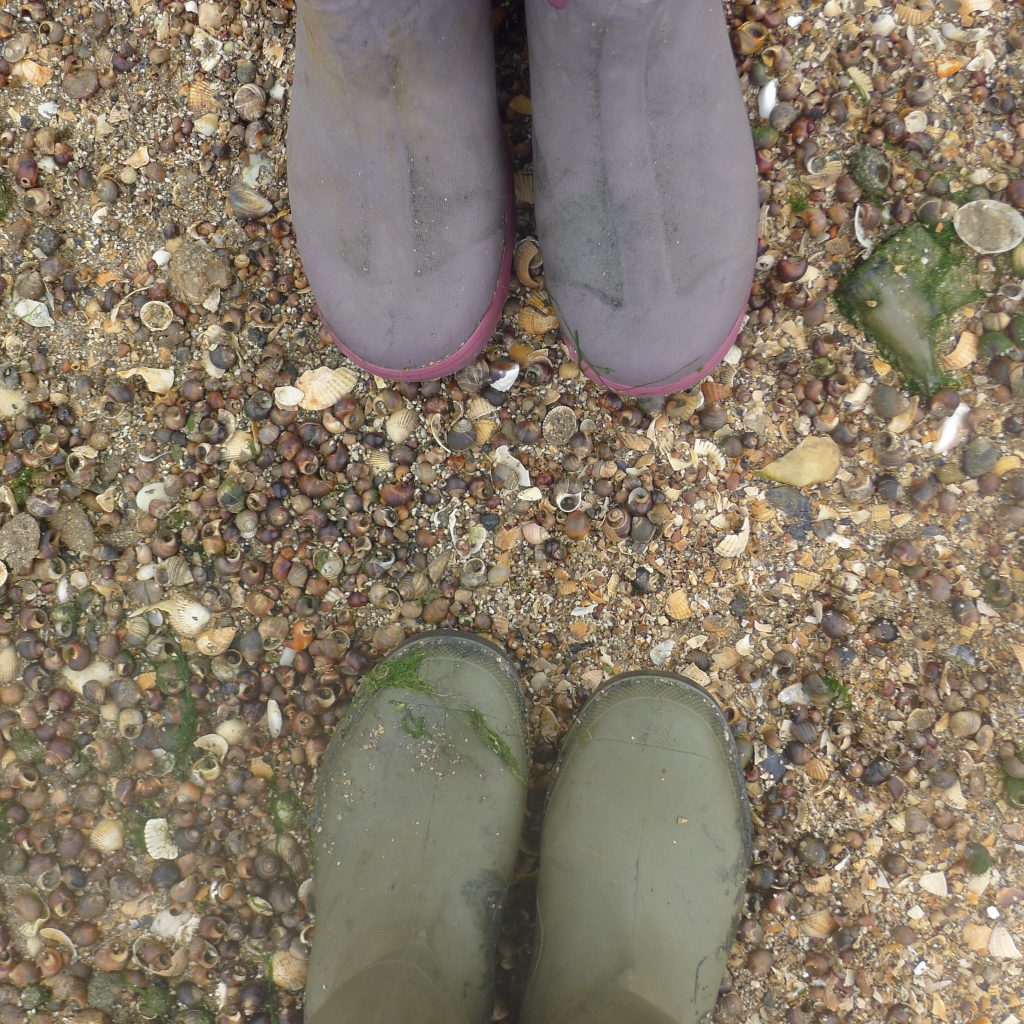
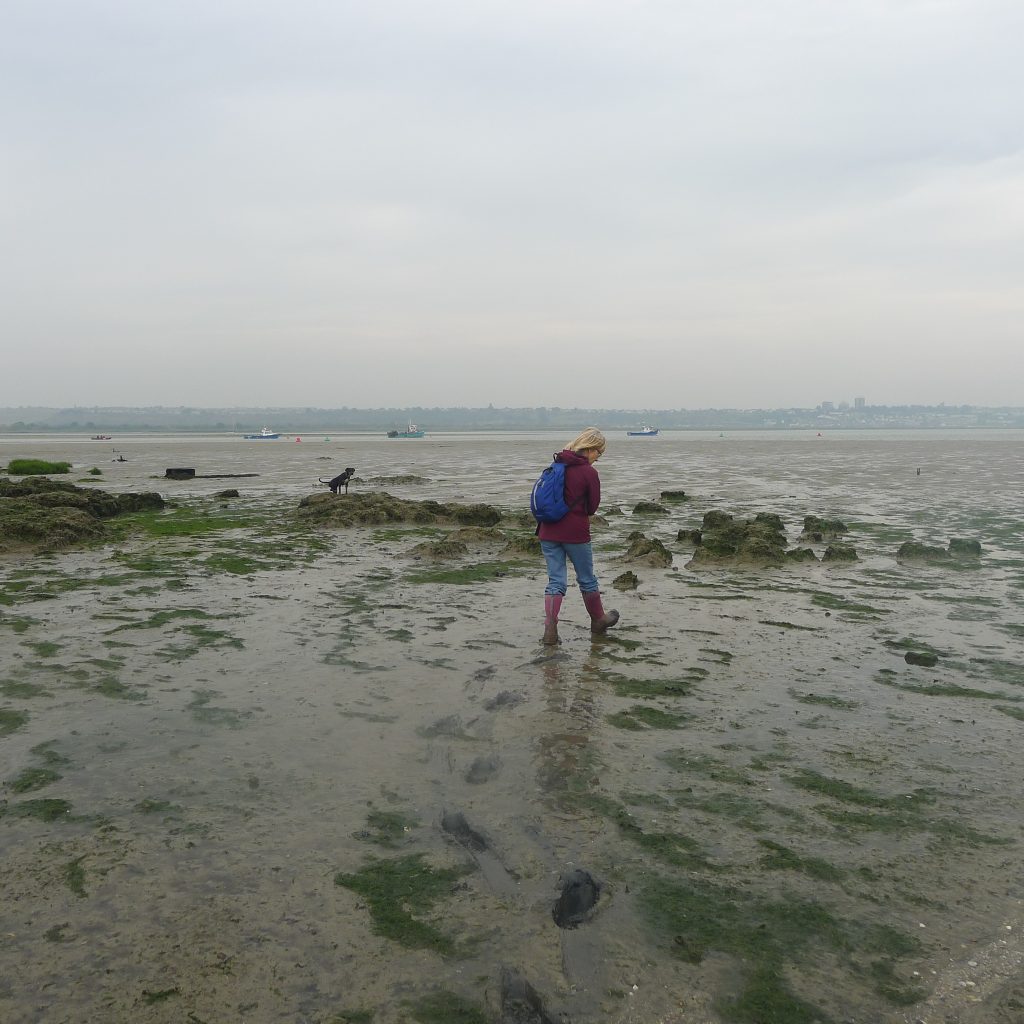
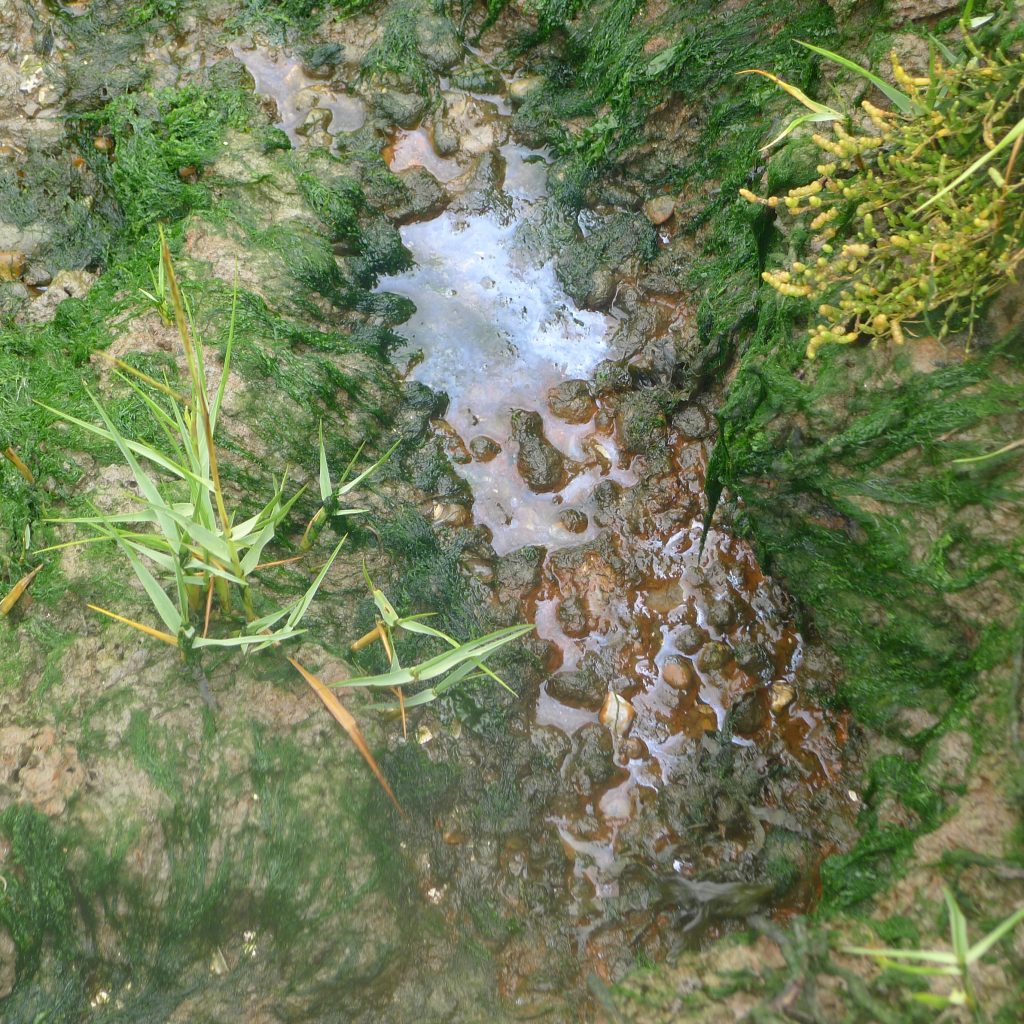
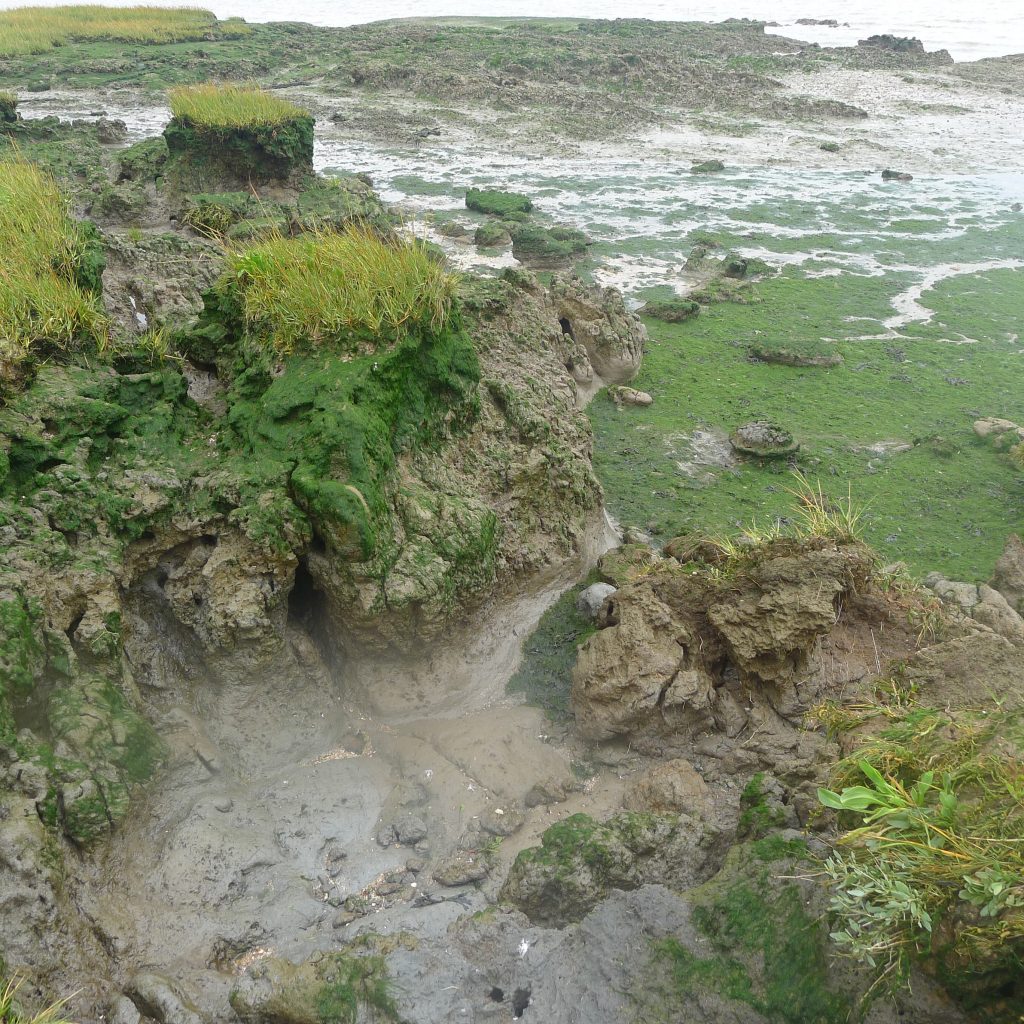
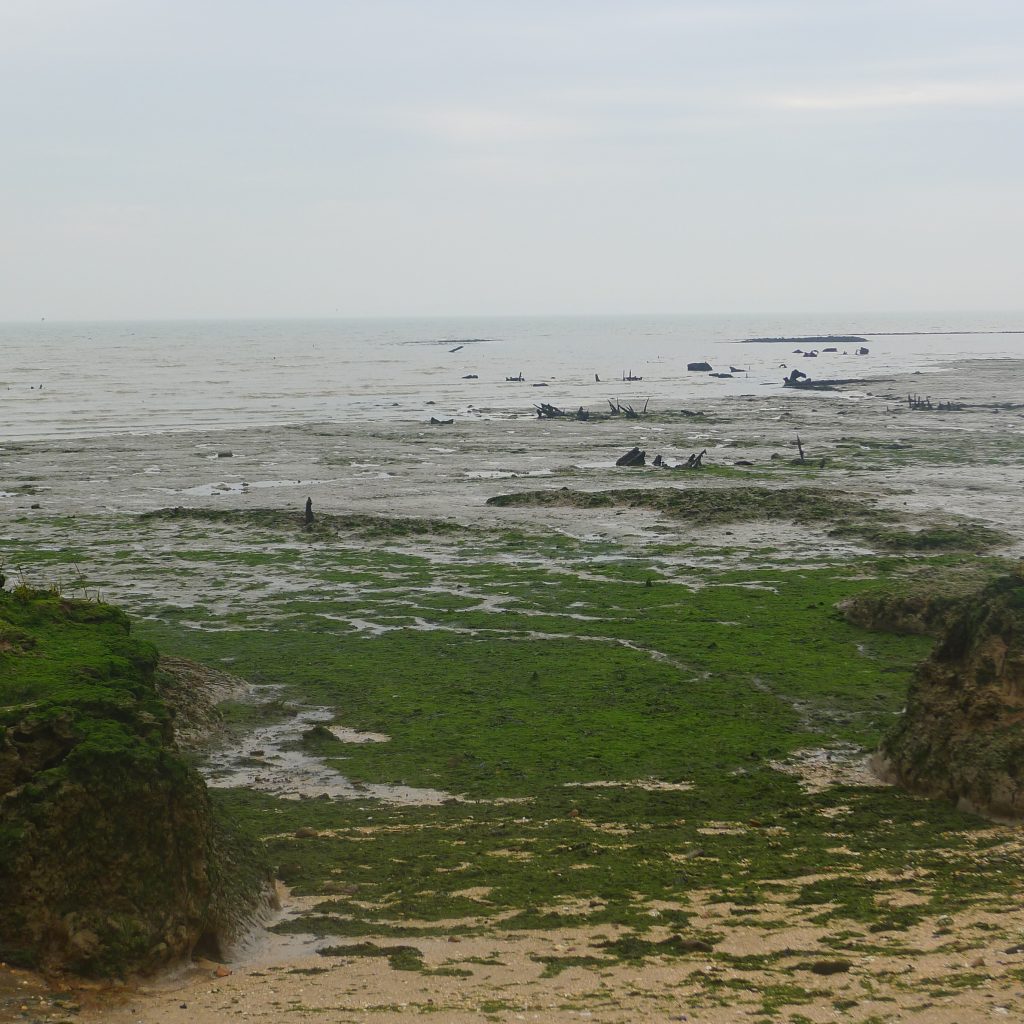
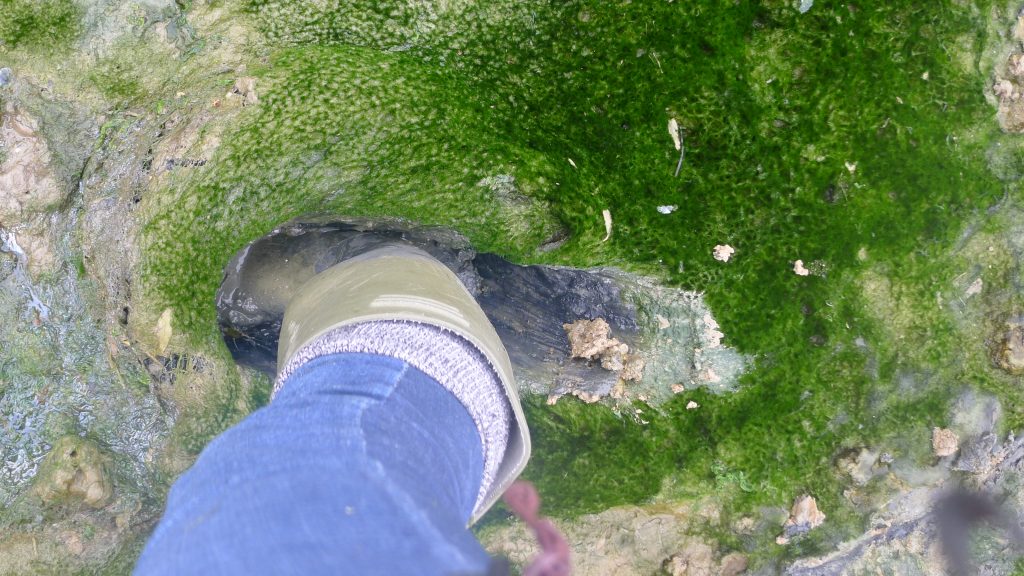
Later, back at my desk, when transcribing what was held in the audio recorder – thankfully it survived being dropped in the mud! – I was struck by its disjunctive quality. This was a product of the turbulent topography under our feet, which meant we had to pay careful attention to where each welly-clad foot fell, could rarely walk two abreast and often had to shift direction, or forge paths of our own (three things that distinguish muddling from more familiar forms of walking). But it was also a product of something more than what was merely beneath our boots. The place itself, its shifting, tidal-trickster mode of being produced in us an increasing confusion and disorientation; it was not unpleasant, but playful and infantile, coaxing us to look closely and ask questions of what we saw, questions that struggle to make sense in more conforming environments.
I responded to the taunts of this place as I experienced them through the process of transcription with a piece of paratactic writing. Parataxis, says Gayatri Spivak, is “the power in language to withhold its own power of making connections”9, a “thinking into openness”10.
The idea that a muddy flatness, of cord grass, samphire, sand and sea water could look like lava or tumbling rocks seems bizarre. That we could get so monumentally confused as to whether something is plastic or seaweed, is strange. That the conversation we had for the hour and a quarter we were out at The Point could have a total absence of narrative thread, is fascinating. When presented with an artefact like this it is difficult to know what to do with it. As a social science researcher, I seek orientation points in my data that can help me to tell stories about what I find. But here I was left only with disorientation points; the mapping app on my phone couldn’t even help as the place we were in is underwater for large portions of time, enough of an anomaly to mean that its algorithm gave up.
As a social science researcher I seek orientation points in my data that can help me to tell stories about what I find. But here I was left only with disorientation points; the mapping app on my phone couldn’t even help as the place we were in is underwater for large portions of time
Instead of pressing meaning, by which we mean order, onto it, this artefact demanded I dwell in its incommensurability, patiently sat in its muddle. I responded by transcribing the text with limited punctuation – the orientation devices of script – as a way of representing this incommensurability – but also its possibility – on the page. The result is an invitation to the reader to move through the text in multiple ways; it does not define points for pause, for breath; there is a rhythm to be found but it isn’t pre-defined. This movement is akin to the paratactic pacing the wetland also demands, each pace placed without apparent connection to the one that came before, or the one that comes after; a productive discomfort that at once disorientates and immerses, disconnects and interconnects.
Composing ways and words and worlds in the mud offers opportunities for spontaneity, curiosity and possibility, but also risks of unpredictability, precarity and contradiction. But learning how to live well, together in the tangled, troubled times and places of the anthropocene, could well begin with this muddle.
1 Autoethnography and feminist theory at the water’s edge: Unsettled islands.
2 Don’t you leave me here: My life
3 The arts of living on a damaged planet: Ghosts and monsters of the anthropocene
4 Postmodern wetlands: Culture, History, Ecology
5 A proposed geological epoch defined by human impact on the planet. Or, as Donna Haraway describes it in her book, Staying with the Trouble: Making Kin in the Chthulucene: “It’s more than climate change; it’s also extraordinary burdens of toxic chemistry, mining, nuclear pollution, depletion of lakes and rivers under and above ground, ecosystem simplification, vast genocides of people and other critters, et cetera, et cetera, in systematically linked patterns that threaten major system collapse after major system collapse.”
6 Nancy Tuana, Viscous Porosity: Witnessing Katrina
7 Autoethnography and feminist theory at the water’s edge: Unsettled islands
8 Anna Tsing, Earth Stalked by Man
9 Thinking Cultural Questions in ‘Pure’ Literary Terms
10 Parataxis, Theodor Adorno
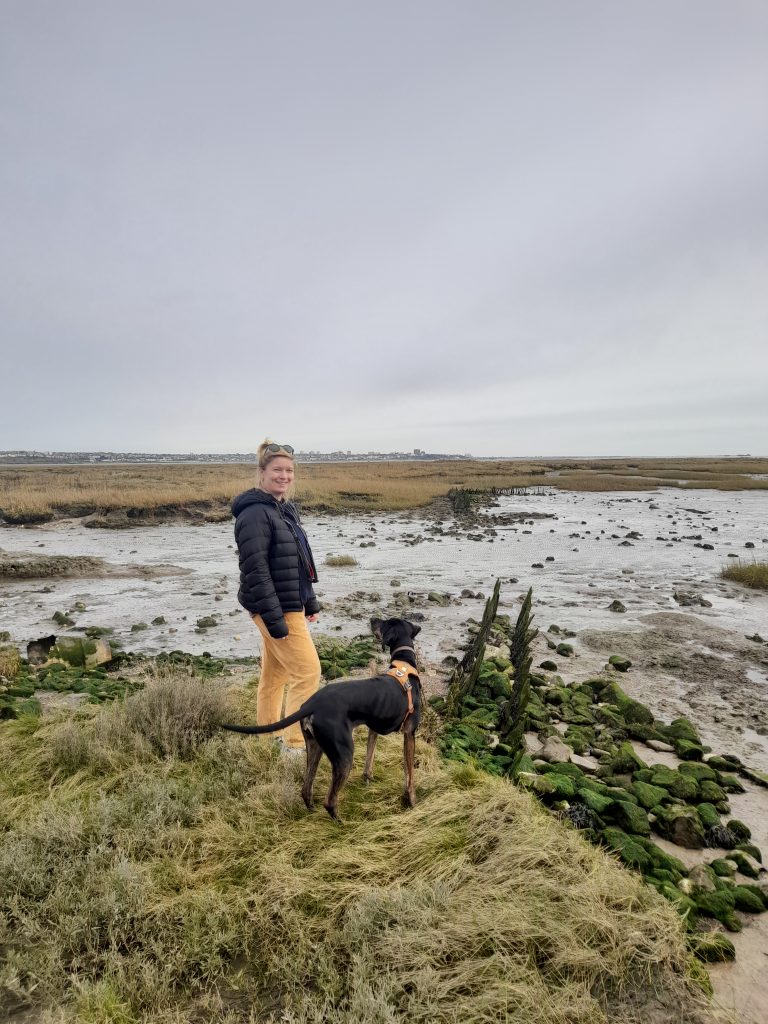
Kate Monson, writer
Kate is a walker, writer and researcher based in Brighton. Ever curious about the shifting ways humans relate to and interact with their environments, she explores questions of movement, memory, discomfort and disorientation – often in the company of her energetic and inquisitive dog, Daisy.
[…] For more inspiring middle-aged people on this site, read about Tim Ryan’s upland walk across Wales, see Lynn Jackson’s lovely drawings of her Slow Ways walks, or read Kate Monson on her family history in intriguing mudlands of Canvey Island […]